Battle off Ulsan on:
[Wikipedia]
[Google]
[Amazon]
The naval Battle off Ulsan (Japanese: 蔚山沖海戦 ''Urusan'oki kaisen''; Russian: Бой в Корейском проливе, ''Boi v Koreiskom prolive''), also known as the Battle of the Japanese Sea or Battle of the Korean Strait, took place on 14 August 1904 between cruiser squadrons of the
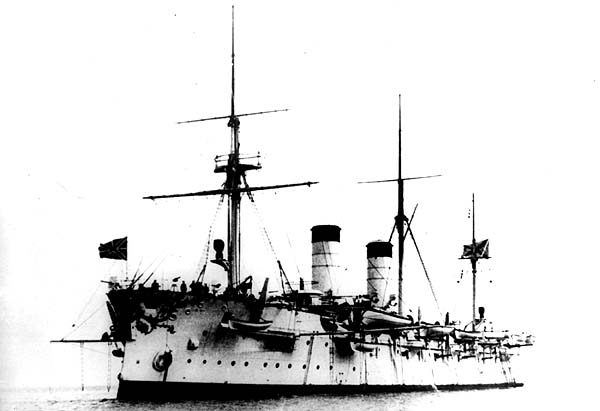
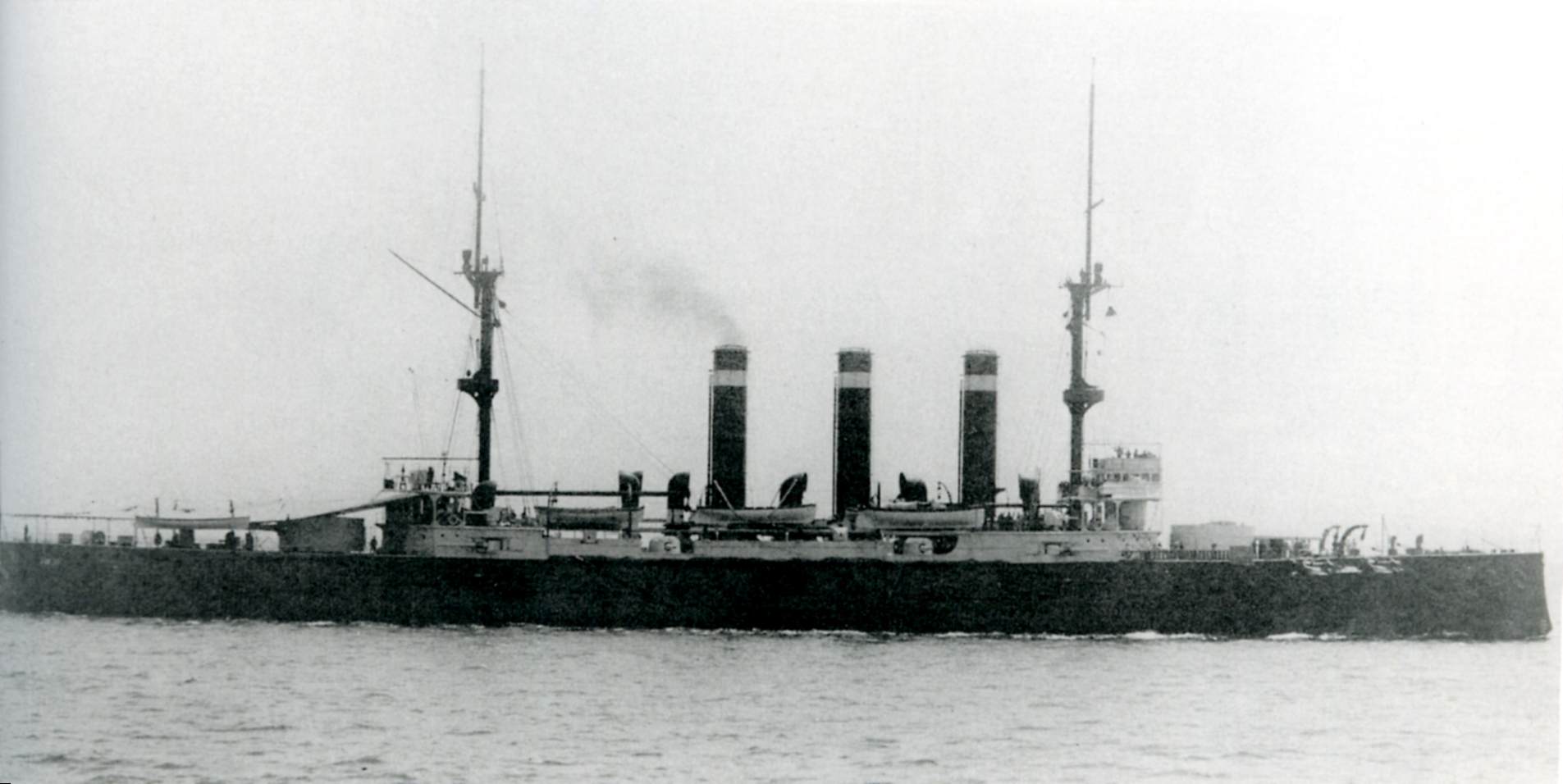
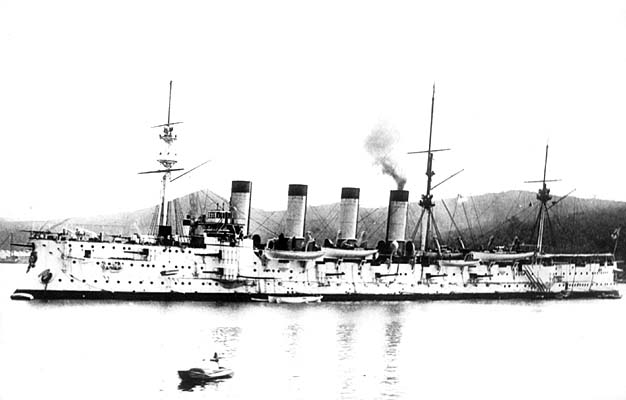
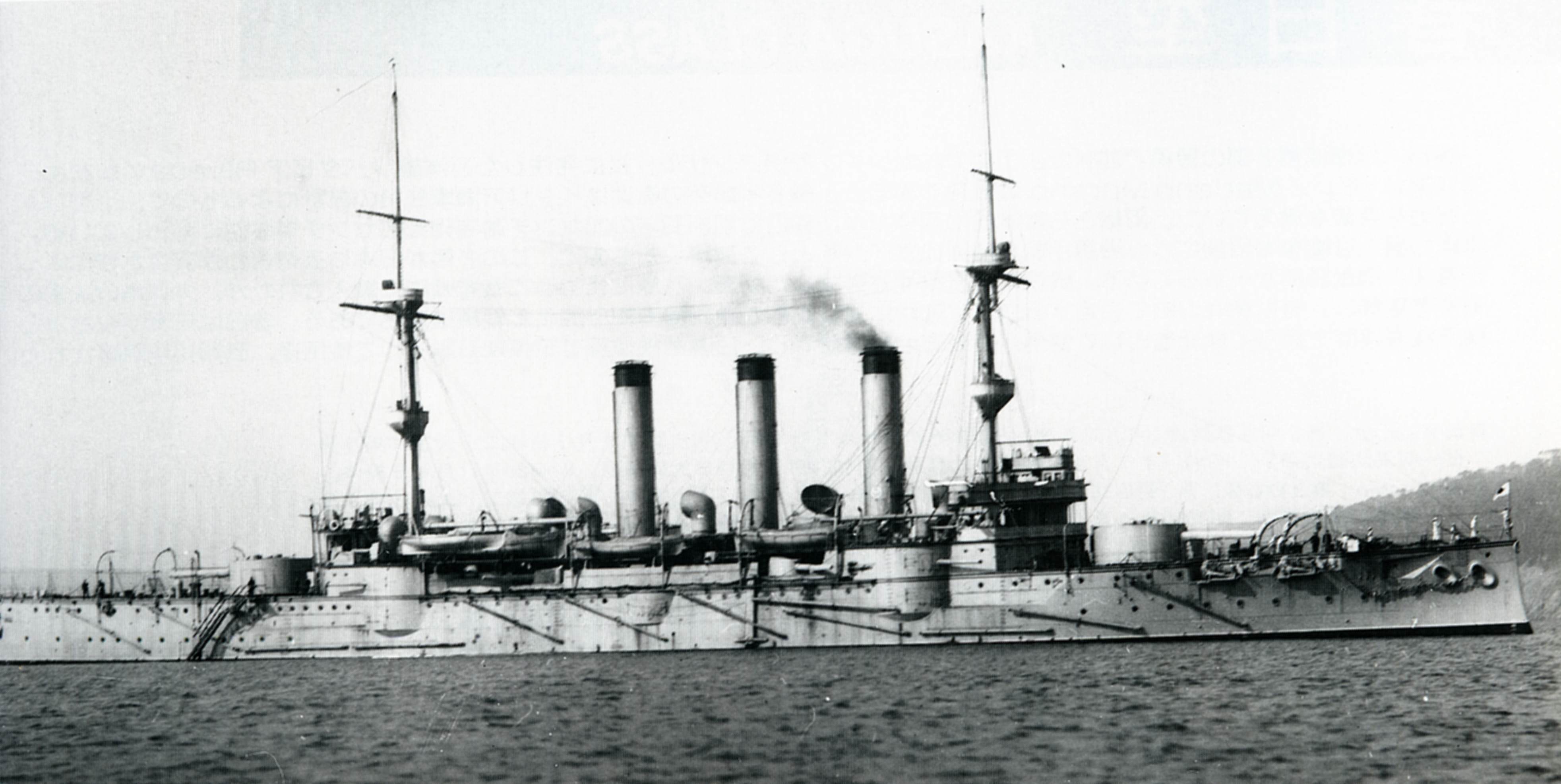
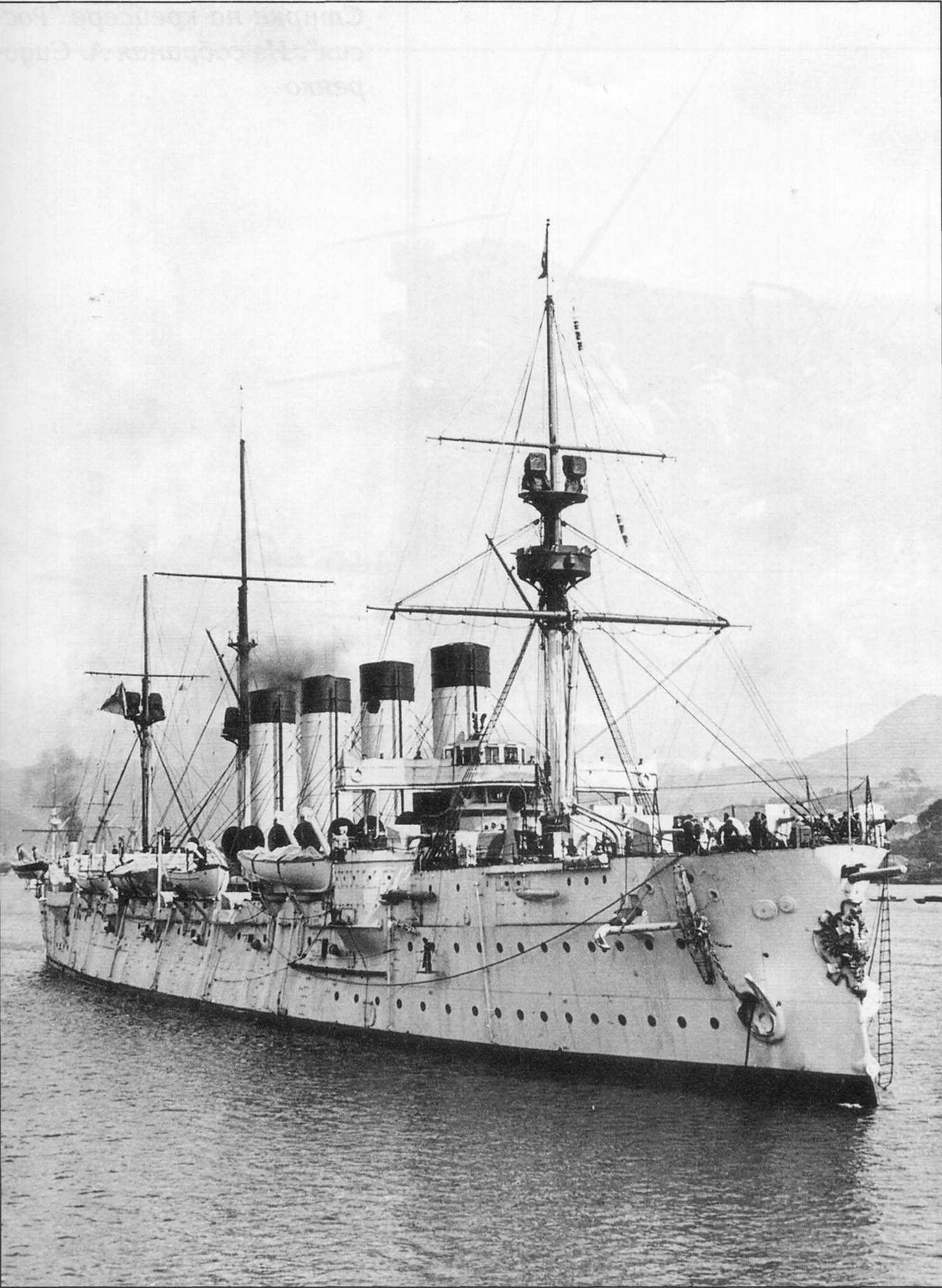

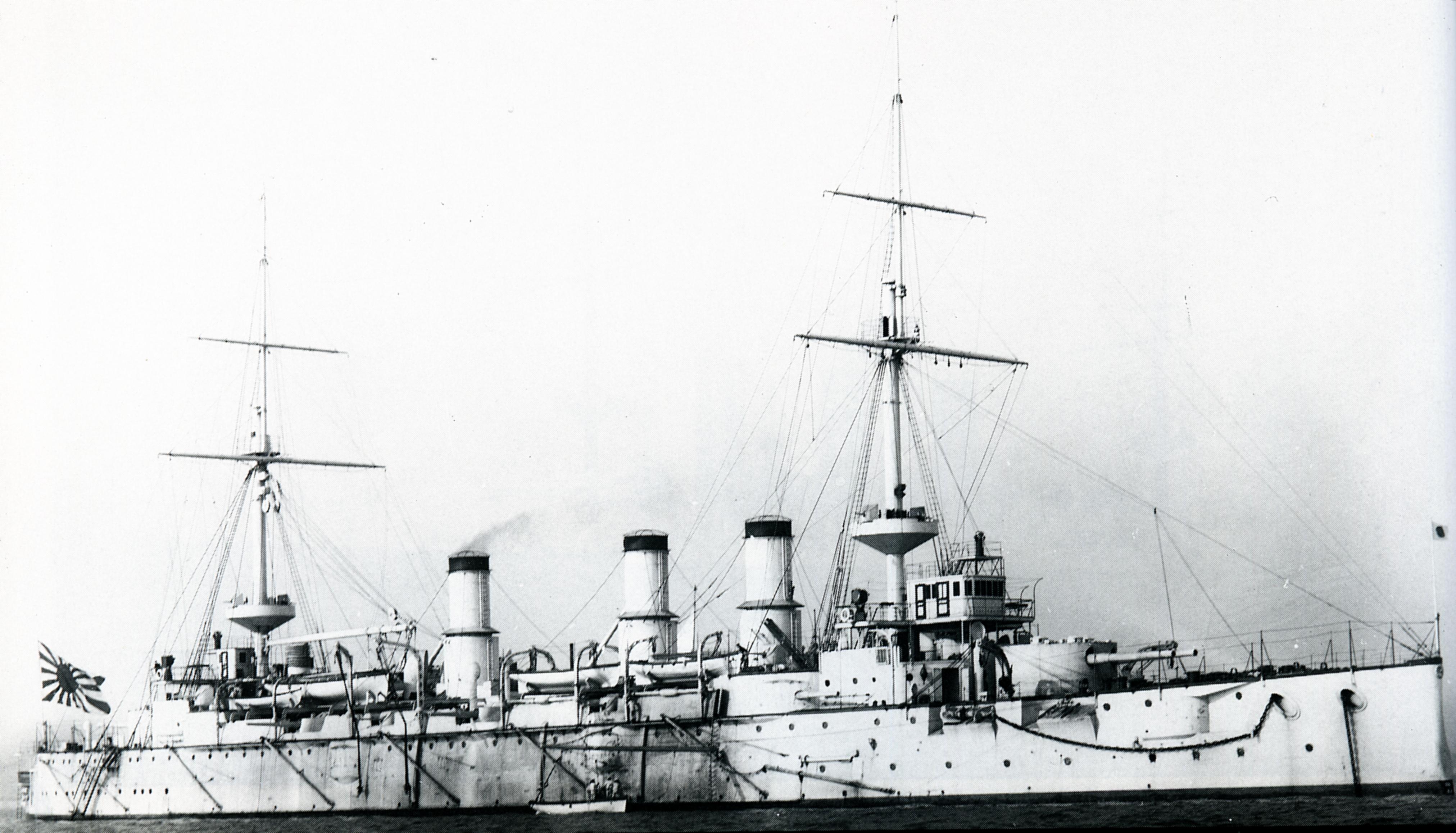
 The Japanese 2nd Fleet under Admiral Kamimura was made up of four armored cruisers , , , , and two
The Japanese 2nd Fleet under Admiral Kamimura was made up of four armored cruisers , , , , and two
Russo-Japanese War Research Society
{{DEFAULTSORT:Battle Off Ulsan
Imperial Russian Navy
The Imperial Russian Navy () operated as the navy of the Russian Tsardom and later the Russian Empire from 1696 to 1917. Formally established in 1696, it lasted until dissolved in the wake of the February Revolution of 1917. It developed from ...
and the Imperial Japanese Navy
The Imperial Japanese Navy (IJN; Kyūjitai: Shinjitai: ' 'Navy of the Greater Japanese Empire', or ''Nippon Kaigun'', 'Japanese Navy') was the navy of the Empire of Japan from 1868 to 1945, when it was dissolved following Japan's surrender ...
during the Russo-Japanese War
The Russo-Japanese War ( ja, 日露戦争, Nichiro sensō, Japanese-Russian War; russian: Ру́сско-япóнская войнá, Rússko-yapónskaya voyná) was fought between the Empire of Japan and the Russian Empire during 1904 and 1 ...
, four days after the Battle of the Yellow Sea
The Battle of the Yellow Sea ( ja, 黄海海戦, Kōkai kaisen; russian: Бой в Жёлтом море) was a major naval battle of the Russo-Japanese War, fought on 10 August 1904. In the Russian Navy, it was referred to as the Battle of 10 A ...
.
Background
At the start of the Russo-Japanese War, the bulk of theRussian Pacific Fleet
, image = Great emblem of the Pacific Fleet.svg
, image_size = 150px
, caption = Russian Pacific Fleet Great emblem
, dates = 1731–present
, country ...
was blockaded
A blockade is the act of actively preventing a country or region from receiving or sending out food, supplies, weapons, or communications, and sometimes people, by military force.
A blockade differs from an embargo or sanction, which are le ...
within the confines of Port Arthur by the Imperial Japanese Navy
The Imperial Japanese Navy (IJN; Kyūjitai: Shinjitai: ' 'Navy of the Greater Japanese Empire', or ''Nippon Kaigun'', 'Japanese Navy') was the navy of the Empire of Japan from 1868 to 1945, when it was dissolved following Japan's surrender ...
. However, the Russian subsidiary naval base at Vladivostok, although shelled by a Japanese squadron under the command of Vice Admiral Dewa Shigetō
Baron was a Japanese admiral in the early days of the Imperial Japanese Navy.
Biography
Dewa was born as the son of a '' samurai'' of the Aizu domain (present day Fukushima prefecture). As a youth, he enlisted in the ''Byakkotai,'' a reserve un ...
in March 1904, remained largely undamaged. Located at Vladivostok was a garrison force consisting of the light cruiser and auxiliary cruiser and a stronger Vladivostok Independent Cruiser Squadron consisting of the armored cruiser
The armored cruiser was a type of warship of the late 19th and early 20th centuries. It was designed like other types of cruisers to operate as a long-range, independent warship, capable of defeating any ship apart from a battleship and fast eno ...
s , , and . This force was under the command of Rear Admiral Karl Jessen from 15 March – 12 June 1904, Vice Admiral Petr Bezobrazov from 12 June – 16 October 1904 and from Jessen again from 15 October 1904 until the end of the war.Kowner, '' Historical Dictionary of the Russo-Japanese War'', p. 412.
Commerce raiding operations
The Vladivostok Independent Cruiser Squadron made a total of six sorties from Vladivostok forcommerce raiding
Commerce raiding (french: guerre de course, "war of the chase"; german: Handelskrieg, "trade war") is a form of naval warfare used to destroy or disrupt logistics of the enemy on the open sea by attacking its merchant shipping, rather than en ...
in 1904, sinking a total of 15 transports. The first raid was from 9 to 14 February along the coast of Japan, in which a single transport was sunk. The second was from 24 February to 1 March along the coast of Korea without any results. However, during the third raid from 23 to 27 April, the Russian squadron ambushed Japanese troop transports approaching Gensan
Wŏnsan (), previously known as Wŏnsanjin (), Port Lazarev, and Genzan (), is a port city and naval base located in Kangwon Province (North Korea), Kangwŏn Province, North Korea, along the eastern side of the Korean Peninsula, on the Sea of Ja ...
in Korea, causing considerable damage. The fourth raid from 12 to 19 June sank several transports in the Tsushima Strait in what was called the " ''Hitachi Maru'' Incident", and resulted in the capture of a British transport, ''Allantown''. This was followed by the fifth raid from 28 June – 3 July, again in the Tsushima Strait, in which the British transport ''Cheltenham'' was captured. Finally on 17 July to 1 August, the Russian squadron raided the Pacific coast of Japan, sinking one British and one German freighter.Westwood, ''Russia Against Japan'', p. 90. As a result of these operations, the Japanese were forced to assign the IJN 2nd Fleet
The was a fleet of the Imperial Japanese Navy (IJN) created as a mobile strike force in response to hostilities with Russia, and saw action in every IJN military operation until the end of World War II.
History
Established on 27 October 1903, ...
under the command of Vice Admiral Kamimura Hikonojō with considerable resources in an attempt to locate and destroy the Russian squadron. Kamimura's failure to do so on several occasions created considerable adverse public comment in Japan.
Sortie
A telegram from the First Pacific Squadron at Port Arthur reached Vladivostok on the afternoon of 11 August 1904, stating that AdmiralWilgelm Vitgeft
Wilhelm Withöft (russian: Вильгельм Карлович Витгефт, tr. ; October 14, 1847 – August 10, 1904), more commonly known as Wilgelm Vitgeft, was a Russia-German admiral in the Imperial Russian Navy, noted for his servic ...
had decided to attempt to break through the Japanese blockade
A blockade is the act of actively preventing a country or region from receiving or sending out food, supplies, weapons, or communications, and sometimes people, by military force.
A blockade differs from an embargo or sanction, which are leg ...
, and therefore Vice Admiral Jessen was ordered to sortie the Vladivostok Cruiser Squadron to assist. However, as late as 5 August 1904, a telegram had been received from Vitgeft stating his intention to perish with Port Arthur, so the Vladivostok cruisers took time to get ready for action. Owing to the delay in sailing, there was little hope of being able to assist the First Pacific Squadron at the critical passage of the Tsushima Straits; however on the assumption that Vitgeft would be successful, the two squadrons planned to rendezvous in the Sea of Japan
The Sea of Japan is the marginal sea between the Japanese archipelago, Sakhalin, the Korean Peninsula, and the mainland of the Russian Far East. The Japanese archipelago separates the sea from the Pacific Ocean. Like the Mediterranean Sea, i ...
.
The warships of the Vladivostok Cruiser Squadron formed in a line abreast at intervals of and headed southward at , in hourly expectation of sighting the Port Arthur Squadron. However, the Port Arthur Squadron had not been sighted by the following morning. As the Vladivostok Cruiser Squadron approached Busan
Busan (), officially known as is South Korea's most populous city after Seoul, with a population of over 3.4 million inhabitants. Formerly romanized as Pusan, it is the economic, cultural and educational center of southeastern South Korea ...
, Jessen advised his captains that he had no intention of attempting to pass Tsushima Straits, and ordered the squadron back to Vladivostok.







 The Japanese 2nd Fleet under Admiral Kamimura was made up of four armored cruisers , , , , and two
The Japanese 2nd Fleet under Admiral Kamimura was made up of four armored cruisers , , , , and two protected cruiser
Protected cruisers, a type of naval cruiser of the late-19th century, gained their description because an armoured deck offered protection for vital machine-spaces from fragments caused by shells exploding above them. Protected cruisers re ...
s and . The Japanese squadron had passed very close to the Russian squadron in the dark of the previous night on opposite courses but neither was aware of the other.
From 01:30 on 14 August 1904, Kamimura had been heading back from his night patrol area on a course that took him directly to the Russian squadron. When Jessen started his turn back to Vladivostok, he sighted the four Japanese armored cruisers.
The situation was ideal for the Japanese side. It was dawn on a fine summer day, and the enemy was as far from Vladivostok as it was possible to be in the Sea of Japan, with the Japanese squadron between the Russians and their distant base.
The battle
At 05:20 on 14 August 1904 the fleets had closed to , and the Japanese opened fire first. For unknown reasons, Kamimura ordered fire concentrated on ''Rurik'', the last and weakest in the Russian column. Subjected to twice the bombardment administered to her stronger comrades, ''Rurik'' lost most of her officers in a short time, and although extremely damaged, remained afloat, the diminishing number of survivors continuing to fire the few remaining guns until the very last, in a gallant display of classic heroism that won the admiration of the Japanese. On the easterly run the Japanese ships took some hits, but nothing comparable to what they inflicted. It was assumed that when the Russians sheered away, Kamimura would have pressed his advantage closer. Inexplicably, this did not happen. Kamimura oddly held his course during the Russian turn, and when he ordered his forces to turn a few minutes later, it was to a new tack that actually lengthened rather than narrowed the range. The remaining Russian cruisers tried to cover ''Rurik'', but with increasing damage, Jessen decided at 08:30 to scuttle ''Rurik'', and save his other ships by heading back towards Vladivostok. The Japanese cruisers pursued for some time, and firing continued, with more damage to the Russian cruisers and slight damage to ''Iwate'' and ''Azuma''. The Russians were in a far worse condition than the Japanese, but Kamimura then made another controversial decision: after pursuit of only three hours, while still on the high seas, and with long daylight steaming hours between the Japanese cruisers and Vladivostok, at 11:15 he broke off the chase, and turned back towards Busan. Despite Kamimura's failure to destroy the two remaining Russian cruisers, he was hailed as a hero in Japan. Although two of the three Russian cruisers escaped, their damage was greater than what the limited repair facilities at Vladivostok could handle, and the Vladivostok Cruiser Squadron never threatened Japanese shipping again.Russian point of view
From the Imperial Russian Navy's point of view, ''Rurik'' was scuttled by her own crew, not by Admiral Jessen's decision. ''Rurik'' was hit by a shell in her unarmored stern and the steering mechanism was destroyed, immobilizing her rudder in an elevated position. So the maximum speed of ''Rurik'' had been greatly reduced and her steering had to be performed by reducing the revolutions of each one of her propellers. Jessen successfully diverted all four Japanese armored cruisers and hoped that ''Rurik'' could stand against ''Naniwa'' and ''Takachiho''. However, the condition of ''Rurik'' was rather bad. First Rank Captain Trusov, her commander, and all senior officers were killed. Finally, Lieutenant Ivanov (the thirteenth in command) ordered ''Rurik'' to be scuttled. ''Rossia'' and ''Gromoboi'' successfully repelled the attack of Kamimura's cruisers at the price of sustaining heavy damage, but IRN sailors, while still under fire, were able to repair the main guns and continue to engage with them. Faced with an increasing rate of fire from the Russian cruisers and with his ammunition supplies nearly depleted, Admiral Kamimura decided to stop pursuit. The very heavy Russian casualties suffered in the battle were the result of two factors: the bursting charges in Japanese shells waspicric acid
Picric acid is an organic compound with the formula (O2N)3C6H2OH. Its IUPAC name is 2,4,6-trinitrophenol (TNP). The name "picric" comes from el, πικρός (''pikros''), meaning "bitter", due to its bitter taste. It is one of the most acidic ...
(trinitrophenol) which on detonation turned the shells into very large numbers of fragments. Additionally the Russian ships lacked protective gun shield
A U.S. Marine manning an M240 machine gun equipped with a gun shield
A gun shield is a flat (or sometimes curved) piece of armor designed to be mounted on a crew-served weapon such as a machine gun, automatic grenade launcher, or artillery pi ...
s for the crews.
Order of battle
:Ship order is according to their position in lineRussia
Vladivostok Cruiser Force - Rear Admiral Karl Jessen: *Armoured cruiser
The armored cruiser was a type of warship of the late 19th and early 20th centuries. It was designed like other types of cruisers to operate as a long-range, independent warship, capable of defeating any ship apart from a battleship and fast en ...
s:
**, flagship, severely damaged; 48 KIA, 165 WIA.
**, severely damaged; 91 KIA, 182 WIA.
**, sunk; 204 KIA, 305 WIA.
Japan
2nd Fleet - Vice Admiral Kamimura Hikonojō *2nd Unit: armored cruisers: **, flagship, slightly damaged; 20 hits, 2 KIA, 17 WIA. **, slightly damaged; 10 hits, 8 WIA. **, slightly damaged; few hits, 3 WIA. **, slightly damaged; over 10 hits, 40 KIA, 47 WIA. *4th Unit: protected cruisers: **, unknown number of hits **, unknown number of hitsS.Suliga (''С. Сулига''): ''Korabli Russko-Yaponskoy voyny. Chast 2. Yaponskiy flot'' (''Корабли Русско – Японской войны. Часть 2. Японский флот''), ArsenalSee also
* List of battles of the Russo-Japanese WarReferences
Sources
* Brook, Peter, "Armoured Cruiser versus Armoured Cruiser, Ulsan, 14 August 1904", in ''Warship 2000–2001'', Conway's Maritime Press, * * * Warner, Denis and Peggy (1974). ''The Tide at Sunrise: A History of the Russo-Japanese War, 1904–1905''. New York. * Мельников Р. М. «Рюрик» был первым. — Л.: Судостроение, 1989. (Melnikov R. M.'' The ''Rurik'' was first'', Leningrad, Sudostroenie Publishing Company, 1989)External links
Russo-Japanese War Research Society
{{DEFAULTSORT:Battle Off Ulsan
Ulsan
Ulsan (), officially the Ulsan Metropolitan City is South Korea's seventh-largest metropolitan city and the eighth-largest city overall, with a population of over 1.1 million inhabitants. It is located in the south-east of the country, neighboring ...
Conflicts in 1904
1904 in Japan
Ulsan
Ulsan (), officially the Ulsan Metropolitan City is South Korea's seventh-largest metropolitan city and the eighth-largest city overall, with a population of over 1.1 million inhabitants. It is located in the south-east of the country, neighboring ...
Ulsan
Ulsan (), officially the Ulsan Metropolitan City is South Korea's seventh-largest metropolitan city and the eighth-largest city overall, with a population of over 1.1 million inhabitants. It is located in the south-east of the country, neighboring ...
August 1904 events